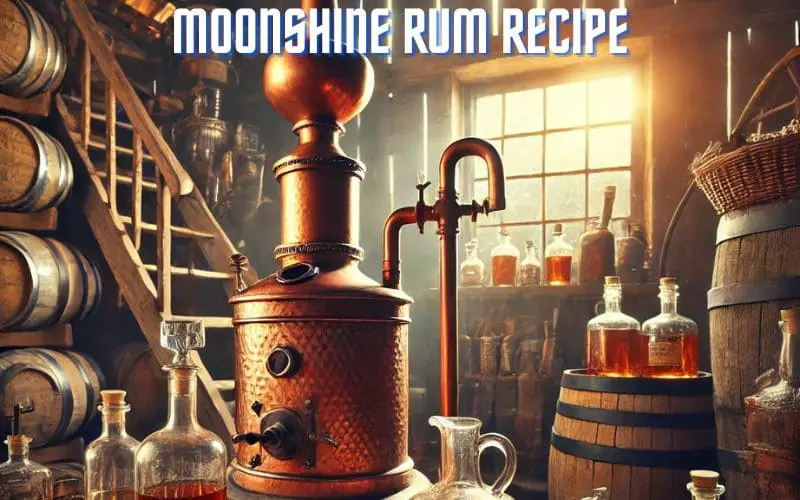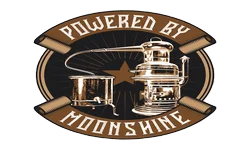Try Our Awesome Homemade Moonshine Rum Recipe For Beginners!

Introduction
Welcome to the world of Moonshine Rum! In this article, we will explore the rich history, the art of crafting moonshine rum, and tips for perfecting your own recipe. Moonshine rum has a fascinating and storied past, and we’ll dive into the details of its creation, ingredients, and legal considerations. Whether you’re a seasoned distiller or a curious enthusiast, this guide is packed with valuable insights, practical advice, and intriguing facts about moonshine rum. Let’s embark on this moonshine adventure together!
What is Moonshine Rum?
History of Moonshine Rum
The history of moonshine rum is deeply intertwined with the traditions of homemade distillation and the spirited creativity of moonshiners. Moonshine rum, often associated with bootlegging during the Prohibition era, holds a special place in the hearts of those who appreciate its rebellious origins and rich cultural significance.
Ingredients for Moonshine Rum
The key ingredients for crafting moonshine rum include molasses, sugar, yeast, and water. These fundamental components come together in a carefully orchestrated fermentation and distillation process to yield the distinctive flavor and character of moonshine rum. Understanding the precise role of each ingredient is essential for mastering the art of moonshine rum production.
Is Making Moonshine Rum Legal?
While the history of moonshine rum is rooted in clandestine operations and illicit production, it’s important to note that the legal landscape surrounding moonshine rum has evolved. Today, regulations and licensing requirements dictate the legality of moonshine rum production. Understanding the legal aspects and obtaining the necessary permits are crucial steps for those considering making moonshine rum.
Safety Precautions for Making Moonshine Rum
Ensuring safety during the process of making moonshine rum is paramount. From proper equipment usage to understanding the potential risks associated with distillation, implementing safety precautions is essential. This includes maintaining a well-ventilated workspace, following precise distillation procedures, and adhering to established safety guidelines to safeguard against hazards related to moonshine rum production.
Ingredients and Equipment
Ingredients:
Equipment:
- Fermentation vessel
- Airlock
- Hydrometer (to measure alcohol content)
- Distillation apparatus (still)
- Collection containers
- Thermometer
- pH meter (optional)
For a Custom Moonshine Still Click Here To Contact Us With Your Needs
No Need To Worry! We Don’t Report Anything To Any Government Agency!
Instructions
1. Fermentation
- Prepare the Wash:
- Mix 2 gallons of distilled, high quality water with 7 pounds of molasses (or 10 pounds of sugarcane juice).
- Heat the mixture to around 150°F (65°C) and stir until fully dissolved.
- Cool the Mixture:
- Allow the mixture to cool to around 80°F (27°C).
- Add Yeast:
- Add yeast to the mixture. Use 1-2 packets of yeast designed for alcohol production.
- Stir the mixture to evenly distribute the yeast.
- Ferment:
- Transfer the mixture to a fermentation vessel.
- Attach an airlock to allow gas to escape without letting oxygen in.
- Let the mixture ferment for 1-2 weeks at room temperature (70-80°F or 21-27°C). Fermentation is complete when bubbling stops, and the hydrometer reading is stable.
2. Distillation
- Setup the Still:
- Assemble your distillation apparatus according to the manufacturer’s instructions.
- Transfer the Wash:
- Transfer the fermented wash to the still, avoiding transferring any sediment.
- Heat the Wash:
- Slowly heat the wash to around 173°F (78°C). Alcohol evaporates at this temperature, separating it from the water and other components.
- Collect the Distillate:
- The vapor will condense back into liquid in the still’s condenser.
- Collect the first 50 ml per 5 gallons of wash and discard (this is known as the “foreshots” and contains methanol, which is toxic).
- Continue collecting the main body of the distillate, known as the “hearts.”
- Once the temperature rises above 200°F (93°C), stop collecting. The remaining liquid is known as the “tails” and contains unwanted compounds.
- Filtering and Aging (Optional):
- Filter the distillate to remove impurities.
- Age the rum in oak barrels or with oak chips for a smoother flavor.
Safety Precautions
- Legal Compliance: Ensure you have the proper permits if required by law.
- Fire Hazard: Alcohol vapor is highly flammable. Keep the still in a well-ventilated area away from open flames.
- Methanol: Discard the foreshots to avoid methanol poisoning.
- Equipment: Use high-quality, food-grade equipment to avoid contamination.
Disclaimer
These instructions are provided for educational purposes only. Distilling alcohol without the proper permits is illegal in many areas and can be dangerous if not done correctly. Always follow local laws and regulations and prioritize safety.
Tips for Perfecting Your Moonshine Rum
Flavor Experimentation
Embark on a journey of flavor exploration as you refine your moonshine rum recipe. Experimenting with various flavor profiles and ingredients allows for creative expression and the development of a distinct taste that resonates with your preferences. Here is a brief overview of some of the ways you can experiment with the flavor profile of your brew.
- Exploring different types of spices and herbs to infuse into your moonshine rum
- Understanding the impact of aging in different types of barrels on the flavor profile
- Utilizing fruit essences and extracts to add complexity to the final product
- Experimenting with sweeteners and flavor enhancers to achieve a well-balanced taste
Storing and Aging Tips
Proper storage and aging play a significant role in enhancing the quality and character of moonshine rum. Implementing effective aging techniques and understanding the impact of storage conditions on the maturation process are essential for achieving exceptional results. We’ll share valuable tips for storing and aging your moonshine rum, ensuring that it evolves into a refined and exquisite spirit.
- Barrel Selection: Choosing the right type of barrel and understanding how it affects the aging process is crucial. American oak, French oak, and other wood varieties impart distinct flavors and aromas to the moonshine rum.
- Aging Environment: Controlling the aging environment, including temperature, humidity, and light exposure, is vital. Each factor can influence the development of flavors and the overall maturation of the rum.
- Aging Duration: Determining the optimal aging duration is a fine balance. Longer aging periods allow for greater flavor integration, while shorter periods preserve the freshness and vibrancy of the rum’s base characteristics.
- Maturation Assessments: Regularly assessing the maturation progress through taste tests and sensory evaluations is essential for ensuring that the rum develops in the desired direction.
- Bottling Strategies: Choosing the right bottling techniques and materials and understanding the impact on the rum’s characteristics is crucial for preserving the quality and aroma during long-term storage.
Additionally, experimenting with different aging techniques such as charred barrel aging, solera aging, and finishing in alternative casks can introduce unique flavors and complexities to the moonshine rum.
Avoiding Common Mistakes
Learning from common pitfalls and mistakes in moonshine rum production is crucial for refining your craft. By understanding the potential challenges and missteps, you can navigate the process with confidence and precision. We’ll highlight key insights and practical strategies to help you avoid common mistakes, empowering you to create exceptional moonshine rum with finesse and expertise.
Conclusion
As we conclude our exploration of moonshine rum, it’s evident that this spirited elixir carries with it a rich heritage, meticulous craft, and a world of possibilities for enthusiasts and connoisseurs alike. From understanding the history and legal aspects to mastering the art of distillation and flavor refinement, moonshine rum embodies an intriguing fusion of tradition and innovation. With the knowledge and insights gained from this guide, you’re equipped to embark on your own moonshine rum journey, unlocking the boundless creativity and craftsmanship inherent in this timeless spirit. Cheers to the allure of moonshine rum!
